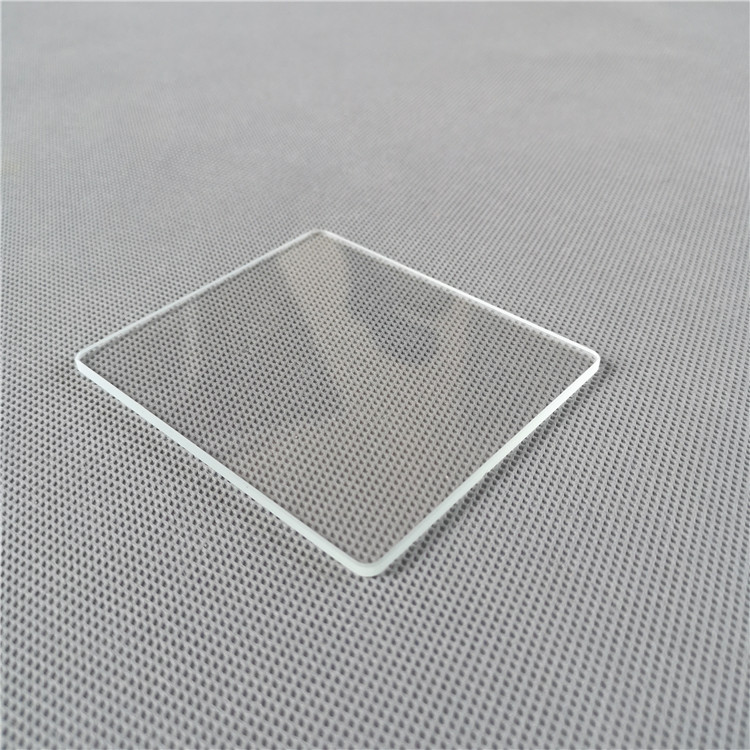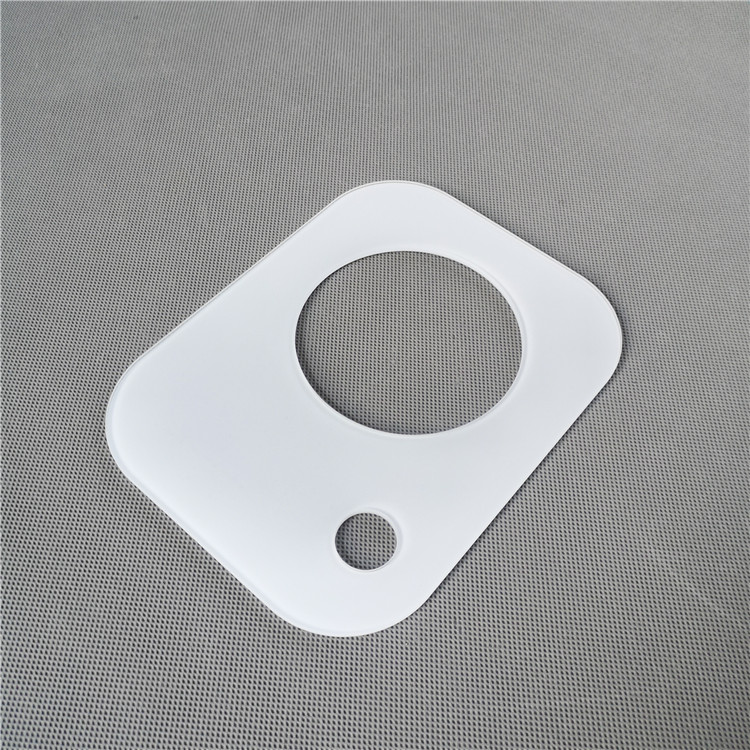Based on my request for subjects, one of the suggestions was to write about laminated glass recycling.
Not being a “real glass production specialist”, I took the time to read brochures and info I could find on the subject. Clear Tempered Safety Glass

On PVB, I based myself on the information I had from a few years back.
I realize that the information might not be complete or fully up to date.
Consider this document as a discussion or thought provoker.
With the realisation that all raw materials are limited (even glass’ raw materials are limited: Sand (SiO 2 ), Lime or Calcium Carbonate (CaCO 3 ) and Soda Ash (Na 2 CO 3 )), recycling of finished products becomes more and more important and urgent.
Looking at laminated glass what are the major raw materials?
Glass can be recuperated (as “cullet’) after crushing the laminates.
However, there are strong technical restrictions:
Pre-consumer material: (originated from processing or re-processing of glass before the final product reaches the consumer market (cut-offs, losses during lamination or bending, manufacturing of IG units or automotive windscreens)
Excluding re-introducible glass (“internal cullet”) in float process. (Internal cullet is estimated to be around 20 %)) (data from Saint-Gobain Glass)
Pre-consumer cullet is estimated to be 11 - 13 % (data from Saint-Gobain)
Post-consumer material: all material coming from glass recycling collection: end-of-life vehicles, construction or demolition waste...)
Post-consumer cullet is estimated to be less than 1 % (data from Saint-Gobain), but increasing due to market evolution (circular economy). Landfill has been the most used “treatment”.
Challenge: Low Iron glass (using regular glass cullet will increase the colour of the low iron glass – reduction of use of cullet in Low Iron glass(?))
Proper recycling of all building glass waste could avoid 925 000 tonnes of landfilled waste every year and could save around 1.23 million tonnes of primary raw materials (873 000 tonnes of sand) and reduce carbon emissions by more than 230 000 tonnes annually (Economic study on recycling of building glass in Europe – Deloitte Sustainability).
One ton of cullet saves 1.2 tons of raw material, including 850 kilograms of sand, and reduces CO 2 emission by app. 300 kilograms. (Data from Glass for Europe)
On May 30th, 2018, the European Union published the 2018/851 Directive, urging member states to ensure that by 2030, no waste that can be recycled or recovered is allowed in landfill.
When renovation was reviewed of the Lloyd’s building in London (2012 – Lord Richard Rogers) chairman of Lloyd’s (Lord Levine) insisted that matrials should be re-used or recycled. The original “Sparkle (textured) glass” had been produced by Sain Gobain Glass and combined with Coollite Solar control coating. The “Sparkle Glass” units had to be de-glazed from the building, cut in half, edge worked and used in Insulated Glass units with one large glass pane at the back and 2 smaller panes at the front (one of “Sparkle glass”) for the same building. A first example of re-use/recycling.
The Paris Climate agreement (2021) has forced the re-glazers to use more and more re-used/re-cycled glass. There are currently various reglazing building projects where the concept is to deglaze the building, glass units are dismantled, cullet is separated and reintroduced in the float oven when producing the new glass for that project.
https://youtu.be/-dljgJqj9H8 (movie: Cogelme) https://www.youtube.com/watch?v=UAnzQl-EIs4 (movie: Viridor) https://www.facebook.com/windshieldpvbrecycling/videos/188800659723236/ https://www.sibelco.com/en/materials/recycled-glass (Sibelco) https://www.ferver.eu/en/members (Glass recycling in Europe) https://www.maltha-glassrecycling.com/en/about-us (Maltha - Belgium-The Netherlands) https://barnsley.cylex-uk.co.uk/company/northern-cullet-ltd-13738214.html (Northern Cullet - U.K.) https://www.paprec.com/en/our-solutions/the-materials-we-recover/glass/ (Paprec - France) https://www.solover.fr/en/flat-glass-recycling/ (Solover - France) https://www.uusioaines.com/en/glass-recycling-services/float-glass-recycling/ (Finland)
Cullet is used continuously in float ovens to reduce the oven bath temperature and emitted CO₂.
Adding 40 % cullet allows to reduce the oven temperature to 1150 °C
Melting pure glass cullet (1886 GH/Ton) requires some 30 % less energy/heat than melting pure glass raw materials (2671 GJ/Ton) (Science hub European commission)
In general, 10% extra cullet results in a 2.5 to 3% reduction of furnace energy consumption.
High temperature resistance composite (oven doors, ceramic or induction cooking panels, fireplace inserts, ...)
glass making tools, abrasives, construction waste (stone, concrete,...)
Other types of glass (Quartz glass):
Laboratory glass ware, wine glasses, borosilicate glass, oven resistant dishes (Pyrex®,...) ...
To evaluate product quality and ensure good separation of the various contents, float glass producers use and prefer to use official recycle companies. They also prefer that full units (IGU) will be delivered.
To my knowledge, no systematic way has been set up/detected to remove/separate all the other materials.
Can be present at a limited % in cullet, will burn off in float oven. (10 – 200 gram/tonne?)
Silicone/poly isobutylene/polysulfide (Insulating glass unit)
Will burn off in float oven, threshold limit (350 gram/tonne?) (Volatile Organic Component level?).
Will need to be removed prior to glass recycling (maximum limit for non-magnetic metals: 0,5 gram/tonne).
Silica gel (drying chemical agent)
Needs to be removed (together with Al separator)
Adding additional features to the original glass product, will render separation even more difficult.
After crushing of laminated glass, still some 4 % of glass fragments (”Cullet”) remain on the PVB.
When glass fragments would be introduced in to a PVB extruder, they will (mechanically) damage the inside of the extruder and block the PVB melt filter.
As we know, increasing the moisture content of the PVB reduces the adhesion to the glass.
So, one could envision that these sheets of recuperated PVB (with glass fragments) could be increased in moisture content to allow the glass fragments to be easily removed afterwards.
One could imagine large pools of (clean, demin.) water with laminated glass or steam ovens where the moisture absorption would go much faster.
It is not very clear if this combined process (crushing and moisture increase) would be more economical than using virgin PVB.
Since one does not know the origin of each single PVB sheet, one was worried about mixing/blending all recuperated PVB sheets into one batch/process.
But the major global PVB suppliers (Eastman, Kuraray, Sekisui, Everlam,...) are all using the same plasticizer for the regular PVB, so the risk for Plasticizer contamination is now far less than some 20 years ago.
Adhesion of this recycled PVB should still be checked/controlled in view of the additive differences, but no compatibility issues are expected.
Currently, PVB (with limited % of glass fragments) is used in flooring and asphalt, but the total cost (product and recuperation) is still more expensive than the original raw material.
Other uses for recycled glass include (Wikipedia):
http://www.recycled-pvb.eu/descripcion_en.php (Lurederra - Spain) https://www.interface.com/EU/en-GB/about/modular-system/PVB-en_GB (Interface Europe) https ://www.ferver.eu/sites/default/files/170511_pvb_presentation.pdf (Ferver - European Federation of Glass Recyclers – Brussels) https://www.sibelco.com/news/sibelco-and-shark-solutions- expand-partnership-in-commercialising-recycled-pvb (Sibelco - Shark Solutions) https://www.youtube.com/watch?v=ZG0Sqgfc7xA (Interface) https://www.youtube.com/watch?v=CjD4QhgTW5w (Shark Solutions) https://professionals.tarkett.com/en_EU/node/id-revolution-pvb-recycling-breakthrough-10210 (Tarkett)
This information has been collected from reading public brochures and literature, interviewing specialists. This info, consequently, does not reflect the full knowledge that is around on this subject. The author is not responsible for eventual misstatements in numbers or application/practice. The used literature has been obtained from Glass for Europe, Saint Gobain, AGC, NSG, Sisecam, ift Rosenheim and various glass recyclers, Arup (Graeme DeBrincat),...
Koroglu Rahimov str.57-57A, AZ1072 Baku Azerbaijan
1860 Air Lane Drive Nashville , TN 37210 United States
19, rue du Puits Romain, 8070 Bertrange Luxembourg
12 place de l'Iris 92400 Courbevoie France
No. 20 Binhe Road, High-tech Development Zone, Luolong Qu Luoyang Shi Henan Sheng, 471003 China
No. 3 Building Resources Boya Plaza, Xiangling Road Qingdao Shi Shandong Sheng, 266071 China
Pol. Ind. Penapurreira Parcela C4-B, 15320 As Pontes de García Rodríguez A Coruña Spain
İçmeler Mah.D-100 Karayolu Cad.No:44A, 34947 Tuzla, /İstanbul Turkey
3196 Thompson Road Fenton , MI 48430 United States
25F, Huarun Mansion A, 6 Shandong Road, Qingdao, PR China Qingdao Shi Shandong Sheng, 266071 China
779 Washington Street Buffalo , NY 14203 United States
Industrial zone RZ R29 51223 Kukuljanovo Croatia
2300 Harmon Road Auburn Hills , MI 48326 United States
Via del Lavoro, 1 22036 Erba CO Italy
Via Marcatutto 7, (Milan) Italy 20080 Albairate MI Italy
No. 160 Yichuan Rd., Jiaonan Shi Qingdao Shi Shandong Sheng, 266000 China

Custom Cut Safety Glass Log in or register to post comments